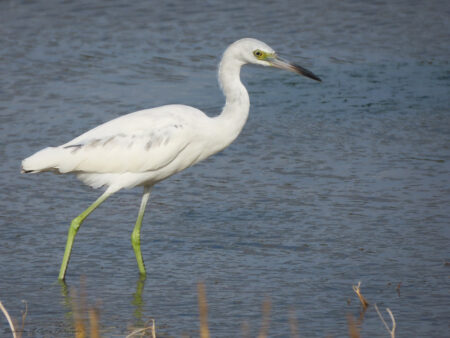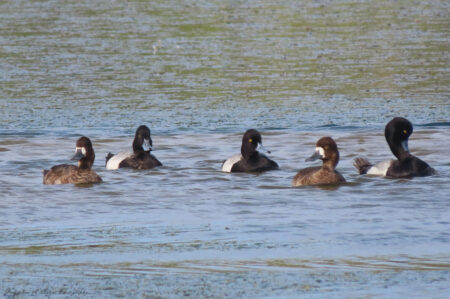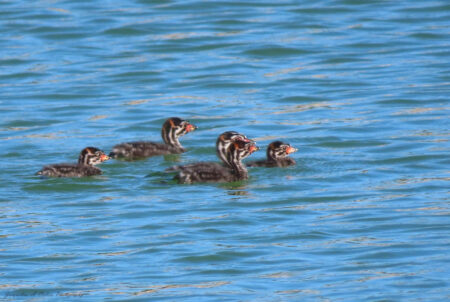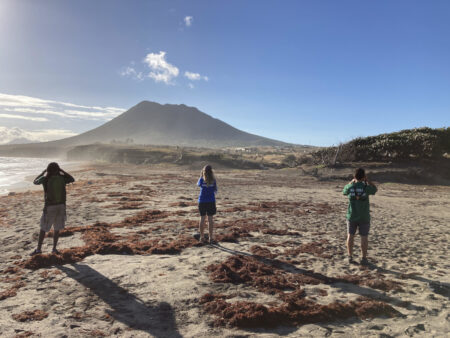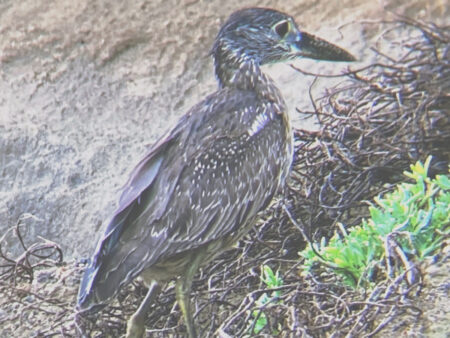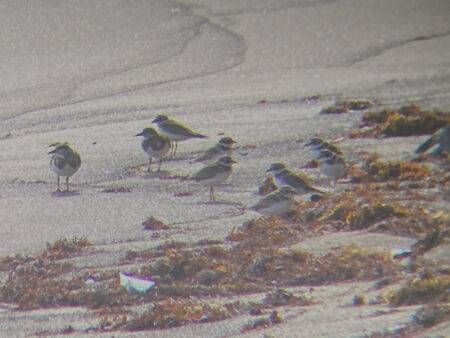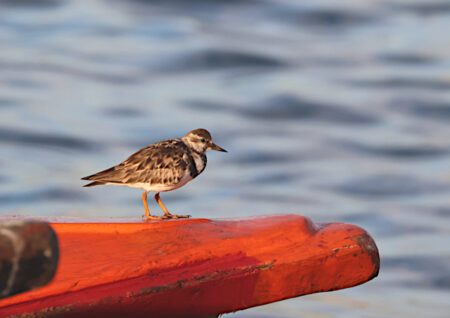
Our 2024 Caribbean Waterbird Census (CWC) marked 15 years of data collection about birds at Caribbean Wetlands—a fantastic milestone! As always, many of our partners, friends, and colleagues took the chance to contribute to this amazing long-term dataset by heading out to their local wetlands to count waterbirds!
Read on for some 2024 CWC highlights featuring just a few of the wonderful birds seen, and exciting events held in celebration of our wetlands. Every single survey makes an important contribution—we are so grateful to everyone who took part in our 2024 CWC!
Kicking off the Count in Antigua and Barbuda
Over on Antigua and Barbuda, our wonderful partners, the Environmental Awareness Group (EAG) adapted our colorful 2024 CWC graphic and took to social media to start off this year’s CWC! They encouraged birders to be citizen scientists and head out to their local wetlands—a great way to spread the word about this year’s count!
People Power in Puerto Rico
As always, we had great participation for the CWC regional count in Puerto Rico. The information that has been gathered there on shorebirds and other waterbirds as part of ongoing CWC efforts is an excellent resource!
This year, Daylene T. Quiñones Pérez, Favián D. Acevedo Caro, and Gabriela Hernández Torres teamed up to take part. They headed out on an impressive three CWC surveys looking especially for our coastal waterbirds! The group carried out two surveys to monitor the Brown Pelican population in Puerto Rico—one in Rompeola, Aguadilla, and the other at Parque Colon in Aguada. Their third count was on the cliffs of Parque Los Merenderos in Quebradillas, where they were monitoring the White-tailed Tropicbird population.
Meanwhile, Dayamiris Candelario, of local nonprofit Organización Pro Ambiente Sustentable (OPAS), shared with us about the event that her organization coordinated. Teachers, students, and parents from Escuela Brígida Alvarez, led by staff of OPAS, completed their waterbird census in Puerto Nuevo Beach on February 2, World Wetlands Day. This beach is next to Cibuco Wetland Nature Reserve, a wetland in which the Cibuco river meets the sea.
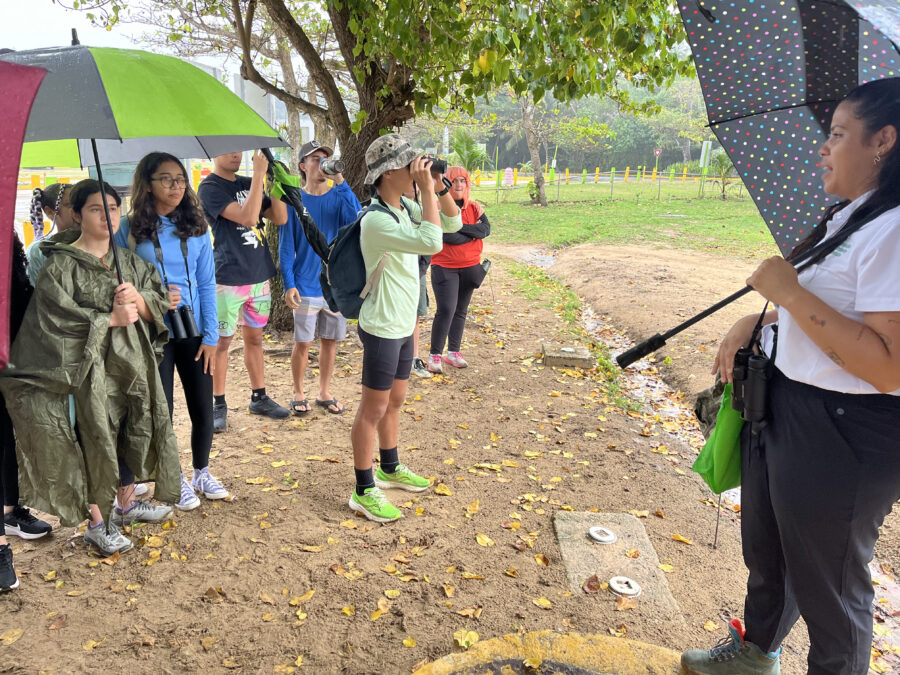
Dayamiris says they headed out on a cloudy, damp, and slightly windy morning ready with their binoculars, bird guides, and ponchos. Undeterred by the weather, they counted 137 birds representing 14 different species! Students learned about CWC protocols, the importance of the CWC to further the conservation of wetlands, different techniques to use when carrying out surveys, and how to spot birds with binoculars. This exercise taught them first-hand about the vast biodiversity that can be found in coastal environments. These areas are highly regarded by locals and visitors to Puerto Rico for their recreational value.
Puerto Nuevo is a public beach awarded with a Blue Flag, an international program that recognizes beaches for, among other things, their environmental management and education efforts. You can find more out more about the work of OPAS on their Instagram or on LinkedIn pages. Learn more about Blue Flag certification here.
Volunteers of Cabo Rojo National Wildlife Refuge continued their participation in the CWC with counts at Las Salinas and Laguna Cartagena. Check out their exciting Facebook posts about these visits!
Glorious Glossy Ibis
Jackie Cestero, the founder of Nature Explorers Anguilla, visited salt ponds and beaches all across Anguilla. This small island has an amazing 16 important bird areas (IBAs), most of which are wetlands or highly coastal areas. Jackie recorded an impressive 63 different species of birds during her CWC efforts! This included a Little Blue Heron, some smart looking Lesser Scaups, and a few very cute grebe chicks!
Another highlight was sightings of the Glossy Ibis at two different locations! You can read more about Jackie’s CWC counts in her blog post. Enjoy her video of Glossy Ibises below!
Shorebirds in St. Eustatius
Jethro van’t Hul, from St. Eustatius National Parks Foundation (STENAPA), told us about his team’s ‘big census day’. The group headed out and about in St. Eustatius and covered a whopping 14 sites with their CWC efforts! Jethro says they had quite a few interesting sightings including the Belted Kingfisher, Green Heron, Juvenile Yellow-crowned Night-Heron, Osprey, Great Egret, 11 Pelicans in one flock, and four different shorebirds in one group! Jethro says they actually encountered quite a few shorebirds, including some they weren’t expecting. Their shorebird sightings included Semipalmated Plovers, Ruddy Turnstones, a Spotted Sandpiper, as well as Killdeer. He also let us know that, “This was a first survey for us, and the group generally felt very positive about it.” Let’s hope that this is the first of many CWC outings for the team!
Tourism meets science in Cuba
Participants in BirdsCaribbean’s January Bird Tour to Cuba combined ecotourism with citizen science! The group conducted CWC counts in many of the wetlands and coastal areas in the western half of Cuba! Yet again, shorebirds were stars of the show! The group had their best counts at Las Salinas De Brito where shorebird counts included 800 Black-bellied Plovers, 200 Short-billed Dowitchers, 52 Willets, and 15 Red Knots!
Connecting with an ‘old friend’ in Jamaica
BirdLife Jamaica members visited the historic fishing village of Port Royal, where waterbirds enjoy a friendly relationship with fishermen, often begging scraps. Amongst the birds seen was a Sanderling wearing some bands! This bird, ‘X19,’ is well-known in Jamaica now—it has been spotted in 2021, 2022, and now in 2024! This Sanderling was banded in Saskatchewan, Canada, which is over 4000 km from Jamaica! When birds get their bands, researchers estimate their age based on their plumage characteristics, species, and age at first breeding. When this Sanderling got banded in 2019, it was estimated that it hatched in 2017 or earlier, so we know that X19 is at least seven years old! Here’s hoping it makes many more winter trips to Jamaica in the future.
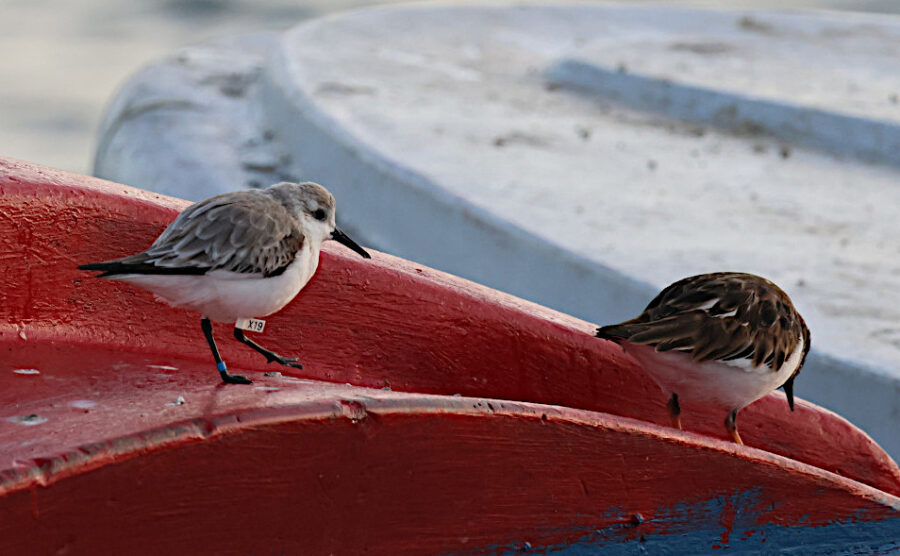
At a World Wetlands Day event organized by the Caribbean Coastal Area Management Foundation (C-CAM), local residents and students were taken on tours, by boat and on foot, of the pristine mangrove forest surrounding the Discovery Centre in Salt River. Although the wetlands were enduring a drought period, larger waterbirds, including flocks of White Ibises and Tricolored Herons, were observed. At another World Wetlands Day event at the Mason River Nature Reserve, a host of youngsters from local schools (kindergarten age upwards) learned about wetland birds and Jamaica’s endemic birds, engaged in bird bingo, and received posters.
Enjoy some photo highlights from CWC in Jamaica!
Rare Sandpiper Spotted in Guadeloupe
Saving the best till last? Anthony Levesque tells us that on Saturday 3rd February, the last day of the CWC regional count, he was with a group of people at Gaschet reservoir in Guadeloupe. Here they had quite the surprise from a very unexpected visitor—a Baird’s Sandpiper!
Anthony says that the bird was “completely unexpected at this date—it is supposed to be far away in South America.” This shorebird is also very rare in the Caribbean, and Anthony notes that it was only the 2nd record of this species for Guadeloupe!
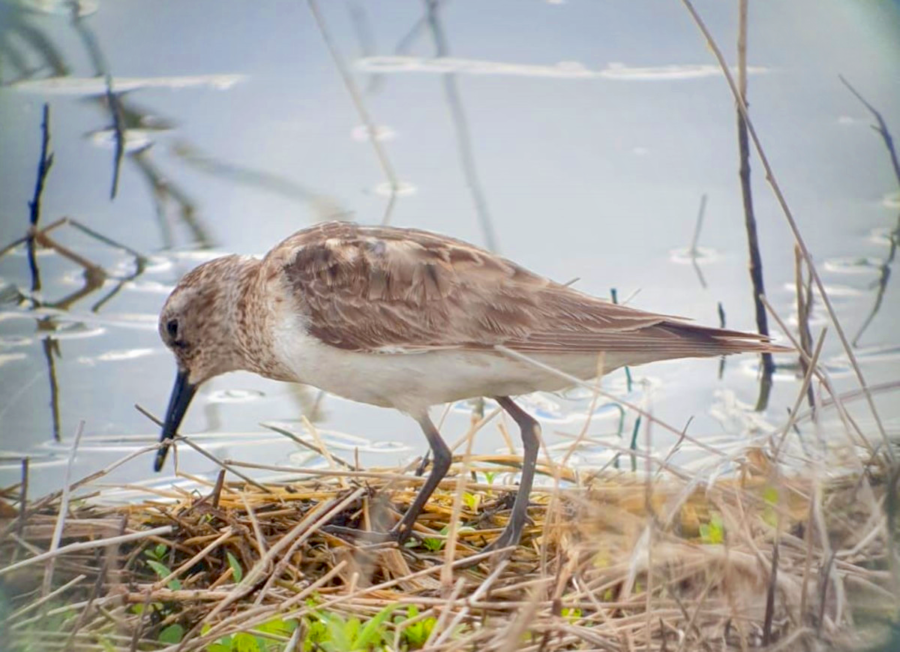
This lovely long-winged, long-distance migrant normally takes a more westerly route on its trip south for the winter. It also has one of the longest and fastest migrations of all bird species! The Baird’s Sandpiper breeds in the high-arctic and winters in South America. On their epic journeys south, they normally travel via Mexico and Central America, bypassing the Caribbean completely, making them a rare sight in our region! You can find out more about their migration in Birds of the World.
The Caribbean Waterbird Census is an ongoing, long-term survey effort that provides important data that helps us keep track of the birds using Caribbean wetlands, understand the threats they face, and raise awareness. We appreciate every single CWC count that gets done during the annual 3-week regional census in January and February. Thank you to all those who sent us highlights and all those who led or joined a CWC survey this year. If you missed this year’s regional census don’t worry—you can do a CWC count at any time of year! CWC counts at Caribbean wetlands are valuable year-round and add to our knowledge of the resident and migratory birds that use them. Just be sure to use a CWC protocol in eBird Caribbean when entering your data every time you do a count at a Caribbean wetland, and do your best to do a complete count, i.e., record all the birds you see and hear. Find out more about the CWC and how to participate here: https://www.birdscaribbean.org/our-work/caribbean-waterbird-census-program/count-waterbirds-in-the-caribbean/ and get practising for next year’s annual census!





